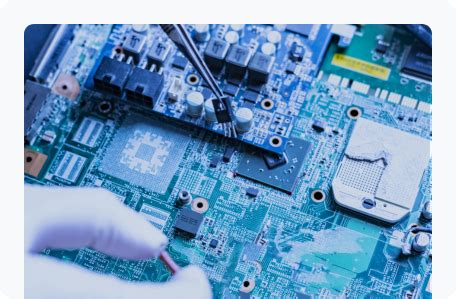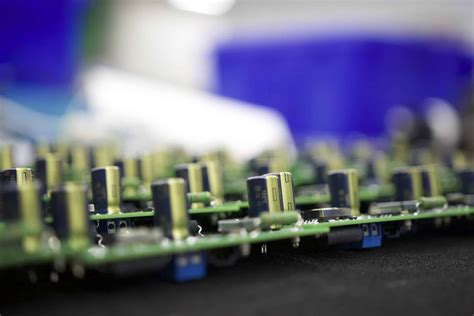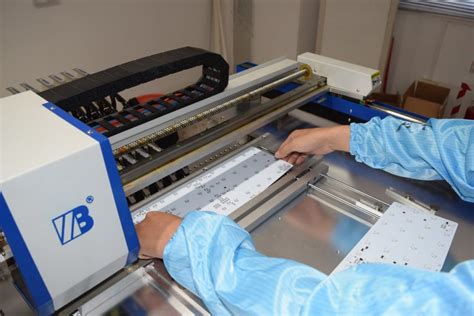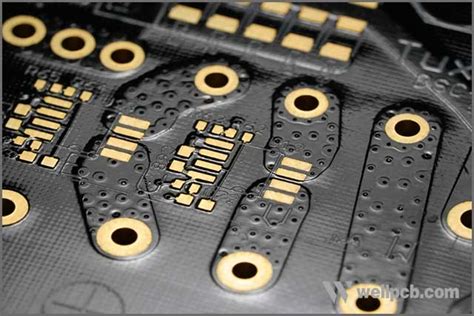Revving Up Innovation with Advanced PCB Assembly Techniques
Key Takeaways
The landscape of PCB assembly is continually evolving, with innovative techniques that drive significant improvements in both efficiency and production quality. Central to these advancements are the incorporation of modern technologies such as robotics and automation, which streamline the PCBA process, reducing manual intervention and enhancing precision. The use of advanced materials is also transforming electronic design, allowing for lighter, more durable components that can withstand the rigors of daily use. Furthermore, case studies highlight examples where companies have successfully implemented these advanced PCB assembly techniques, showcasing not only improved productivity but also cost savings. By addressing the challenges faced in traditional manufacturing processes through innovative solutions, businesses can achieve a competitive edge in a rapidly changing market. In this way, understanding and adopting these cutting-edge methods is essential for any organization looking to optimize its production capabilities and drive future growth in electronic design and manufacturing.
Introduction to Advanced PCB Assembly Techniques
In the rapidly evolving world of electronics, advanced PCB assembly techniques stand out as a cornerstone for driving innovation and efficiency. As designs become more intricate, the need for PCBA methods that enhance both accuracy and speed is more critical than ever. These cutting-edge practices not only streamline the manufacturing workflow but also improve the overall quality of electronic products. For instance, techniques such as surface mount technology (SMT) and through-hole soldering have transformed traditional approaches, allowing for greater component density and reduced production times.
Additionally, the integration of high-speed automated systems has revolutionized how pcb assembly is performed. By employing robotics and AI-driven processes, manufacturers can achieve unprecedented precision while minimizing human error. The use of advanced soldering techniques also plays a pivotal role in ensuring reliable connections between components.
“Embracing innovation in pcb assembly is not merely a choice but a necessity for companies aiming to maintain a competitive edge.”
Moreover, the continual refinement of materials used in PCBA—such as high-performance laminates and specialized solder pastes—enhances thermal management and electrical performance. As a result, products can meet higher operational demands while maintaining longevity.
Overall, mastering these advanced assembly techniques enables manufacturers to satisfy increasing market demands while optimizing production efficiency. By leveraging these innovations, businesses can pave the way for smarter electronic design and robust manufacturing solutions that withstand competitive pressures.
Key Innovations Driving Efficiency in PCB Production
In the dynamic landscape of pcb assembly, several key innovations are reshaping the production process. Prominent among these innovations is the integration of automation, significantly enhancing operational efficiency and minimizing human error. Automated systems streamline tasks, from soldering to component placement, resulting in quicker turnaround times and improved accuracy in pcba production. Moreover, the adoption of advanced materials has led to more reliable and compact designs, enabling manufacturers to meet the growing demands for miniaturization without sacrificing performance. Smart technologies, such as real-time monitoring and data analytics, play a crucial role in identifying potential issues before they escalate into costly problems. By employing these state-of-the-art tools, manufacturers not only boost productivity but also foster a robust environment for continuous innovation. As a result, these advancements not only optimize production lines but also ensure that companies maintain their competitive edge in an ever-evolving market landscape.
The Role of Automation in Modern PCB Assembly
In the ever-evolving landscape of PCB assembly, automation plays a pivotal role in enhancing precision and efficiency. The incorporation of automated machinery and processes in the PCBA workflow not only streamlines production but also minimizes human error, ensuring a higher quality output. Advanced technologies such as pick-and-place machines and automated soldering systems enable manufacturers to achieve remarkable speed and accuracy in assembling complex circuitry. With these innovations, the scalability of pcb assembly increases significantly, allowing for faster turnaround times without compromising on quality. Moreover, automation facilitates real-time monitoring and data collection, leading to improved consistency in production standards. By adopting these automated solutions, companies can gain a sustainable competitive edge in a market that demands higher production rates and greater reliability in electronic devices. The integration of automation not only transforms how we approach PCBA but also sets the stage for future developments in electronic design and manufacturing.
Materials and Technologies Transforming Electronic Design
The landscape of PCB assembly has undergone a significant transformation, driven by innovative materials and cutting-edge technologies. The integration of advanced materials such as high-frequency laminates and flexible substrates is enabling designers to create more intricate and efficient PCBA solutions than ever before. These materials not only enhance performance but also contribute to weight reduction, which is crucial in sectors like aerospace and automotive. Furthermore, developments in soldering techniques, such as laser soldering and selective soldering, are improving the reliability of connections, ensuring better signal integrity and longer product lifecycles. As manufacturing processes become increasingly sophisticated, the adoption of smart manufacturing technologies, including IoT-enabled equipment and data analytics, is optimizing production lines by enhancing traceability and reducing waste. Collectively, these innovations are not only redefining how electronic design is approached but also setting a new standard for efficiency in the assembly process, ultimately leading to a more competitive landscape in the electronics industry.
Case Studies: Successful Implementation of Advanced Techniques
The realm of pcb assembly has witnessed transformative changes, particularly through the adoption of advanced techniques that significantly enhance productivity and quality. One noteworthy case is a leading electronics manufacturer that integrated advanced PCB assembly methods into its production line. By employing robotic automation combined with machine vision systems, they achieved remarkable improvements in precision and speed. This transition not only reduced error rates but also lowered production time, allowing for quicker market responsiveness. Another case in the telecommunications sector showcased how companies implemented pcba methodologies that prioritized modular designs. This approach allowed for easier modifications and upgrades, facilitating innovation while simultaneously minimizing waste during the manufacturing process. These implementations underscore the critical role that advanced techniques play in reshaping the landscape of electronic design and manufacturing, proving to be essential for maintaining a competitive edge in a rapidly evolving market. Innovative practices such as these highlight the significance of pcb assembly processes that embrace modern technologies to streamline operations and foster growth.

Challenges and Solutions in Advanced PCB Manufacturing
In the rapidly evolving landscape of PCB assembly, manufacturers face numerous challenges that demand innovative solutions. One of the primary obstacles is the increasing complexity of designs, as modern electronics integrate more components and functionalities into smaller footprints. This trend necessitates advanced PCBA techniques to ensure that components are accurately placed and soldered without any defects.
Moreover, as products become smarter and more compact, maintaining quality during production becomes increasingly critical. Adopting automated inspection systems has emerged as a viable solution, enabling real-time monitoring of assembly processes and identifying defects early. Utilizing technologies such as machine vision can significantly reduce the incidence of errors, subsequently minimizing waste and optimizing production timelines.
Another pressing challenge is sourcing materials that not only meet performance standards but also comply with environmental regulations. Manufacturers are experimenting with alternative materials and innovative manufacturing methods to reduce their environmental impact while achieving high-quality PCB assembly. For instance, advancements in adhesive technologies and soldering techniques have been shown to facilitate cleaner operations without compromising durability.
To summarize how these challenges interact within the industry, consider the following table showcasing key hurdles alongside their corresponding strategies:
| Challenge | Solution |
|---|---|
| Complexity in design | Implementation of advanced PCBA techniques |
| Quality control issues | Adoption of automated inspection systems |
| Material compliance | Exploration of alternative eco-friendly materials |
By addressing these challenges with targeted solutions, manufacturers can enhance their competitive edge, improve efficiency in their production lines, and ultimately deliver higher quality products to market.

Future Trends in PCB Assembly and Design Optimization
As the electronics industry continues to evolve, pcb assembly processes are becoming increasingly sophisticated, driven by emerging technologies and innovative practices. One significant trend is the integration of smart manufacturing principles, which enhances operational efficiency and minimizes waste. By leveraging advanced techniques such as automated optical inspection (AOI) and surface mount technology (SMT), manufacturers can ensure higher precision in pcba while speeding up production timelines. Moreover, the incorporation of big data analytics allows for real-time monitoring and adjustments in the assembly line, leading to optimized workflows.
Another focal point is the use of flexible PCB designs that accommodate diverse electronic applications while ensuring robust performance. These advancements not only address the need for miniaturization in consumer electronics but also promote sustainable practices through reduced material consumption. Consequently, as these trends shape the landscape of pcb assembly, companies that embrace such innovations can maintain a competitive edge in a rapidly changing market.
In summary, adopting forward-thinking strategies in pcba is essential for staying aligned with industry advancements and meeting customer demands efficiently. The alliance of technology with innovative design underscore a transformative era in electronic manufacturing.
Conclusion
In summary, the landscape of pcb assembly is rapidly evolving, with innovative techniques and materials reshaping the industry. The integration of advanced automation and the latest technologies not only enhances the efficiency of pcba processes but also optimizes production timelines. As companies embrace these advanced PCB assembly techniques, they are not only finding solutions to traditional manufacturing challenges but are also positioning themselves for a competitive advantage in a dynamic market. By leveraging cutting-edge practices, businesses are capable of delivering more reliable and functionally advanced electronics, contributing to increased demand and customer satisfaction. The continuous pursuit of excellence in pcb assembly practices will undoubtedly play a significant role in driving future innovations within electronic design and manufacturing sectors. Thus, embracing these advances is essential for companies looking to thrive in an increasingly complex environment.
FAQs
What is advanced PCB assembly?
Advanced PCB assembly, often referred to as PCBA, involves sophisticated techniques and methods to manufacture printed circuit boards with high precision and efficiency, catering to modern electronic needs.
How do advanced techniques enhance the efficiency of PCB assembly?
These advanced techniques streamline the assembly process, reduce human error, and optimize production time. They employ cutting-edge technologies that ensure each component is placed accurately, significantly improving overall efficiency in pcb assembly.
What role does automation play in modern PCB assembly?
Automation plays a vital role by allowing for higher production rates and consistent quality. Automated systems can execute complex tasks rapidly, thus minimizing costs and enhancing the speed of the PCBA process.
What materials are commonly used in advanced PCB assembly?
Advanced assemblies often utilize materials such as high-frequency laminates, flexible substrates, and lead-free solder. These materials not only enhance performance but are also crucial for meeting regulatory standards.
Can you provide examples of successful implementation of advanced PCB techniques?
Several industries have successfully adopted pcb assembly innovations. For instance, companies in telecommunications utilize multilayer boards which allow for greater signal integrity and complex connections.
What challenges are faced in advanced PCB manufacturing?
Challenges include managing production costs while ensuring quality, complying with various industry standards, and keeping up with rapid technological advancements. Solutions often involve continuous training and investment in state-of-the-art equipment.
What future trends should we expect in PCB assembly?
Looking ahead, trends indicate a shift towards more sustainable practices, increased miniaturization of components, and the integration of IoT technology into PCBA, which will reshape future electronic designs.







